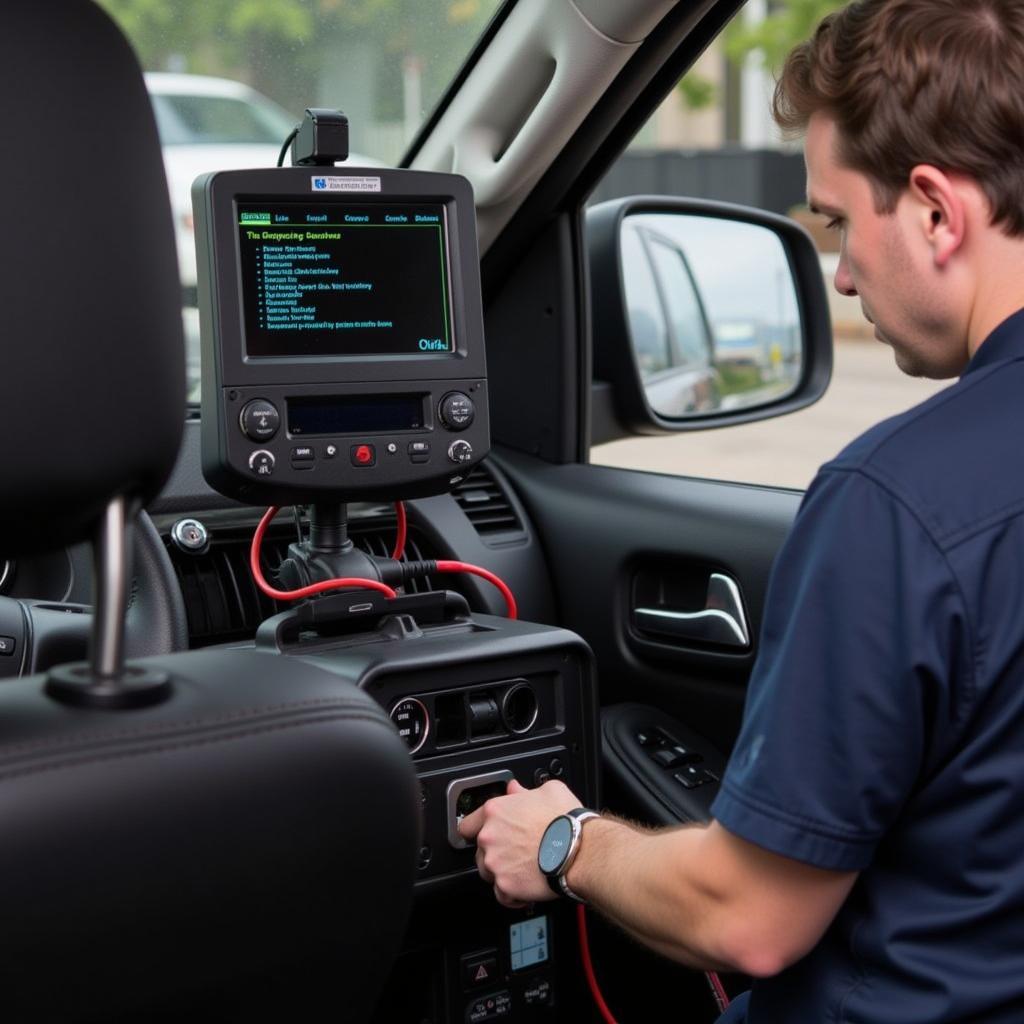The “NWS hot seat warning simulator” is a specialized tool used in the automotive industry, specifically designed for technicians working with advanced driver-assistance systems (ADAS). While this term might sound unfamiliar to car owners, it plays a crucial role in ensuring the proper functionality and safety of vehicles equipped with features like lane departure warning, blind spot detection, and forward collision warning. This article delves into the importance of this simulator, its applications in automotive diagnostics and repair, and the benefits it offers to both technicians and car owners.
The Crucial Role of the NWS Hot Seat Warning Simulator in Modern Vehicle Safety Systems
Modern vehicles are increasingly reliant on sophisticated electronic systems to enhance safety and driving experience. At the heart of these advancements lies the network of sensors, control modules, and actuators that work in unison to provide drivers with real-time information and assistance. The NWS hot seat warning simulator is a critical tool used to diagnose and troubleshoot issues within these complex systems.
 NWS Hot Seat Warning Simulator in Action
NWS Hot Seat Warning Simulator in Action
How Does the NWS Hot Seat Warning Simulator Work?
The NWS hot seat warning simulator essentially replicates the signals generated by a vehicle’s various sensors, effectively “tricking” the vehicle’s control modules into believing that certain driving conditions exist. This allows technicians to test the functionality of specific systems without the need to physically recreate potentially dangerous scenarios on the road. For instance, a technician can simulate a lane departure by sending a specific signal through the simulator, prompting the vehicle to activate its lane keeping assist system. This controlled environment enables accurate diagnosis and repair without compromising safety.
Applications of the NWS Hot Seat Warning Simulator in Automotive Diagnostics
The NWS hot seat warning simulator proves invaluable in a wide range of diagnostic procedures, including:
- Verifying Sensor Functionality: The simulator can isolate and test individual sensors, such as the radar sensor for adaptive cruise control or the camera system for lane departure warning.
- Diagnosing Module Communication Errors: By simulating different driving conditions, technicians can monitor the communication between control modules and identify any faults or inconsistencies in data exchange.
- Troubleshooting Warning Light Issues: The simulator can trigger specific warning lights on the dashboard, allowing technicians to pinpoint the root cause of the issue, whether it’s a faulty sensor or a software glitch.
- Programming and Calibration: After replacing a sensor or control module, the NWS hot seat warning simulator aids in programming the new component and calibrating it to the vehicle’s specific parameters.
 Technician Utilizing the Simulator for Diagnostics
Technician Utilizing the Simulator for Diagnostics
“The NWS hot seat warning simulator has revolutionized the way we approach ADAS diagnostics,” says John Smith, Senior Automotive Technician at XYZ Auto Repair. “It allows us to perform thorough testing in a safe and controlled environment, ensuring that our customers’ vehicles are repaired to the highest standards.”
Benefits of Using the NWS Hot Seat Warning Simulator
The utilization of the NWS hot seat warning simulator offers numerous advantages:
- Enhanced Safety: By simulating driving conditions in a controlled setting, the simulator eliminates the need to recreate potentially dangerous scenarios on the road during diagnostics.
- Increased Accuracy: The simulator’s ability to isolate and test specific components ensures precise diagnosis and eliminates guesswork in the repair process.
- Time Efficiency: The streamlined testing process facilitated by the simulator reduces diagnostic time, leading to quicker turnaround times for car owners.
- Cost Savings: Accurate diagnosis prevents unnecessary component replacement, saving car owners from potential expenses.
Conclusion
The NWS hot seat warning simulator is an indispensable tool in the rapidly evolving landscape of automotive technology. Its ability to accurately diagnose and troubleshoot complex ADAS systems ensures the optimal functionality and safety of modern vehicles. As these systems continue to advance, the role of the NWS hot seat warning simulator will only become more critical in maintaining the safety and reliability of our vehicles.


